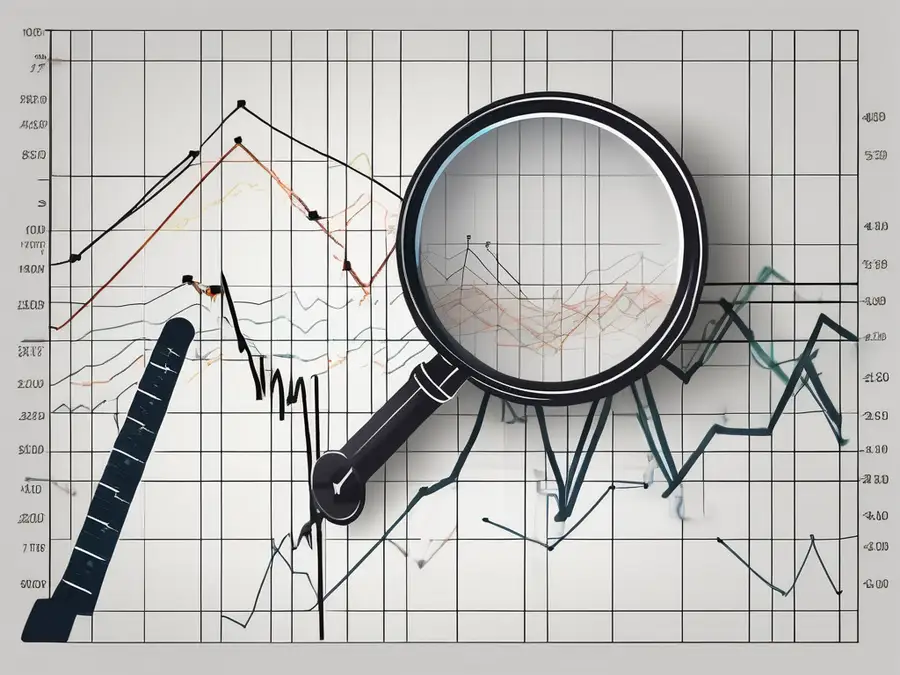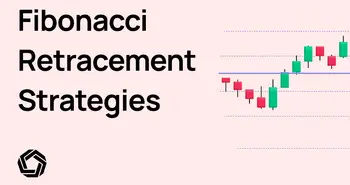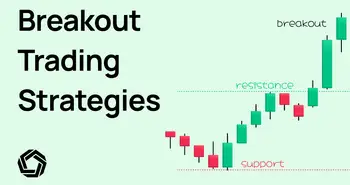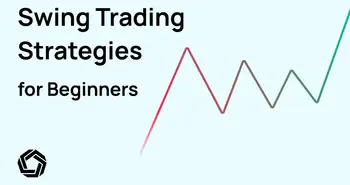Retracement Trading: Strategies and Tips

Retracement trading is a powerful strategy that can help traders identify potential market reversals and capitalize on profitable opportunities. In this article, I will guide you through the basics of retracement trading, explain the importance of retracement in market analysis, and provide you with valuable tips on developing effective retracement trading strategies.
Understanding the Basics of Retracement Trading
What is Retracement Trading?
Retracement trading is a technical analysis approach that involves identifying temporary price reversals within a larger trend. It is based on the idea that after a significant price move in one direction, the market often retraces or pulls back before continuing in its original trend.
Traders who utilize retracement trading often look for opportunities to enter the market at favorable prices during these temporary pullbacks. By identifying potential support and resistance levels, traders can make informed decisions about when to buy or sell assets.
Key Terms in Retracement Trading
To fully grasp retracement trading, it's essential to familiarize yourself with some key terms:
- Support and Resistance Levels: These are price levels where the market tends to reverse or stall. Traders use these levels to gauge the strength of a trend and identify potential entry and exit points.
- Fibonacci Retracement: A popular method used to determine potential retracement levels based on the Fibonacci sequence. The Fibonacci retracement levels, such as 23.6%, 38.2%, and 61.8%, are believed to indicate possible areas of price reversal.
- Swing High and Swing Low: The highest and lowest points reached by a particular market before a reversal. Identifying these swing points is crucial for determining the direction of the trend and potential entry points for trades.
Successful retracement trading requires a combination of technical analysis skills, market knowledge, and risk management strategies. Traders must be able to interpret price charts, understand market psychology, and implement effective risk-reward ratios to maximize their trading opportunities.
The Importance of Retracement in Trading
Retracement, a key concept in technical analysis, plays a vital role in guiding trading decisions and understanding market dynamics. It involves identifying levels at which a price trend experiences a temporary reversal before continuing in the original direction. These retracement levels serve as critical indicators of potential support or resistance areas, offering valuable insights to traders.
When traders analyze retracement levels, they gain a deeper understanding of market behavior and price action. By recognizing these levels, traders can strategically plan their entries and exits, enhancing their risk management strategies. Effectively utilizing retracement levels empowers traders to make informed decisions, maximizing profit potential while minimizing potential losses.
Role of Retracement in Market Analysis
Retracement levels act as crucial indicators of potential support or resistance areas. By identifying these levels, traders can make informed decisions about when to enter or exit trades, effectively managing risk and optimizing profit potential.
Moreover, retracement analysis provides traders with a comprehensive view of market trends and price movements. By incorporating retracement levels into their analysis, traders can gain a holistic perspective on market dynamics, enabling them to adapt their strategies accordingly.
Predicting Market Trends with Retracement
Retracement analysis not only helps traders seize short-term trading opportunities but also provides valuable insights into the larger market trends. By identifying retracement levels within an overarching trend, traders can better anticipate the continuation or reversal of the market's direction.
By studying retracement patterns, traders can enhance their ability to forecast potential price movements and market trends. This in-depth analysis allows traders to stay ahead of market developments, positioning themselves strategically to capitalize on emerging opportunities.
Developing a Retracement Trading Strategy
When it comes to developing a retracement trading strategy, one of the key aspects is identifying retracement levels accurately. One popular tool for this purpose is the Fibonacci retracement tool. This tool is based on the Fibonacci sequence and plots horizontal lines at key levels like 38.2% and 61.8% based on the previous price move. These levels are believed to act as potential support or resistance areas. To enhance the effectiveness of your retracement analysis, it's advisable to combine these Fibonacci levels with other technical indicators, such as support and resistance areas, moving averages, or trendlines.
Furthermore, in the realm of retracement trading, timing plays a crucial role in determining the success of your trades. It's essential to look for confluence between retracement levels and other technical signals to increase the probability of a profitable trade. This confluence could come in the form of candlestick patterns, trendline breaks, or chart patterns aligning with the identified retracement levels. Additionally, incorporating oscillators like the Relative Strength Index (RSI) can help in determining potential overbought or oversold conditions before entering a trade, adding another layer of confirmation to your trading decisions.
Identifying Retracement Levels
To effectively identify potential retracement levels, consider using the Fibonacci retracement tool. This tool plots horizontal lines at key Fibonacci levels, such as 38.2% and 61.8%, based on the previous price move. By combining these levels with other technical indicators, such as support and resistance areas, you can increase the accuracy of your retracement analysis.
Timing Your Trades
Timing is crucial in retracement trading. Look for confluence between retracement levels and other technical signals, such as candlestick patterns or trendline breaks, to increase the probability of a successful trade. Additionally, consider using oscillators, such as the Relative Strength Index (RSI), to gauge overbought or oversold conditions before entering a trade.
Advanced Retracement Trading Techniques
Incorporating Retracement with Other Trading Indicators
Retracement analysis works best when combined with other technical indicators. Consider incorporating moving averages, volume analysis, or momentum indicators into your retracement strategy to gain a comprehensive understanding of market conditions and enhance your trading decisions.
Adding moving averages to your retracement analysis can help smooth out price fluctuations and provide a clearer trend direction. By using a combination of short-term and long-term moving averages, traders can identify potential entry and exit points with greater accuracy. Volume analysis is another valuable tool that can confirm the strength of a retracement by assessing the trading activity during the price movement. High volume during a retracement can indicate a strong market interest, supporting the likelihood of a successful trade.
Risk Management in Retracement Trading
Risk management is a vital aspect of any trading strategy, including retracement trading. Implementing proper position sizing, setting stop-loss orders, and adhering to a disciplined exit strategy can help mitigate losses and protect your capital. Remember, not every retracement will result in a reversal, so it's essential to have an exit plan in place.
Position sizing is a critical component of risk management in retracement trading. By determining the appropriate percentage of your capital to risk on each trade, you can protect your account from substantial losses during unfavorable market conditions. Setting stop-loss orders at key support or resistance levels can help limit potential losses and prevent emotional decision-making during volatile retracements. Additionally, having a disciplined exit strategy based on your risk tolerance and profit targets can ensure consistent and controlled trading outcomes.
Common Mistakes in Retracement Trading and How to Avoid Them
Over-reliance on Retracement
While retracement analysis can provide valuable insights, it's important not to rely solely on this method. Remember to consider other technical indicators, market fundamentals, and news events to ensure a comprehensive view of the market before making trading decisions.
Ignoring Market Context
Retracement levels must always be analyzed within the broader market context. Failing to consider factors such as overall market sentiment, economic data releases, or geopolitical events can lead to misguided trading decisions. Stay informed about market conditions and adjust your retracement trading strategy accordingly.
FAQs – Your Retracement Trading Guide
Q: What is the main purpose of retracement trading?
A: The main purpose of retracement trading is to identify potential price reversals within a larger trend, allowing traders to enter trades at optimal levels and maximize profit potential.
Q: How can I identify retracement levels?
A: Retracement levels can be identified using tools such as the Fibonacci retracement tool, which plots horizontal lines at key Fibonacci levels based on the previous price move. Additionally, consider using other technical indicators, such as support and resistance areas, trendlines, or candlestick patterns to confirm potential retracement levels.
Q: How do I manage risk in retracement trading?
A: Risk management is critical in retracement trading. Implement proper position sizing, set stop-loss orders, and stick to a disciplined exit strategy. Additionally, adjust your risk exposure based on market conditions and never risk more than you can afford to lose.
In conclusion, mastering retracement trading requires a thorough understanding of the basics, recognizing the significance of retracements in market analysis, and developing effective trading strategies. Incorporating retracement analysis with other technical indicators and practicing proper risk management will increase your chances of success. Remember, retracement trading takes time and practice to refine your skills, so be patient, stay disciplined, and continuously educate yourself to become a proficient retracement trader.
Ready to take your retracement trading to the next level with Morpher? Experience the future of investing on a platform that offers zero fees, infinite liquidity, and the ability to trade a wide array of assets, from stocks to NFTs. With Morpher, you can start with as little as $1, enjoy up to 10x leverage, and trade with confidence knowing your funds are secure in your self-hosted wallet. Don't miss out on a unique trading experience built on the Ethereum Blockchain. Sign Up and Get Your Free Sign Up Bonus today and join the revolution in global trading with Morpher.

Disclaimer: All investments involve risk, and the past performance of a security, industry, sector, market, financial product, trading strategy, or individual’s trading does not guarantee future results or returns. Investors are fully responsible for any investment decisions they make. Such decisions should be based solely on an evaluation of their financial circumstances, investment objectives, risk tolerance, and liquidity needs. This post does not constitute investment advice.

Painless trading for everyone
Hundreds of markets all in one place - Apple, Bitcoin, Gold, Watches, NFTs, Sneakers and so much more.

Painless trading for everyone
Hundreds of markets all in one place - Apple, Bitcoin, Gold, Watches, NFTs, Sneakers and so much more.









